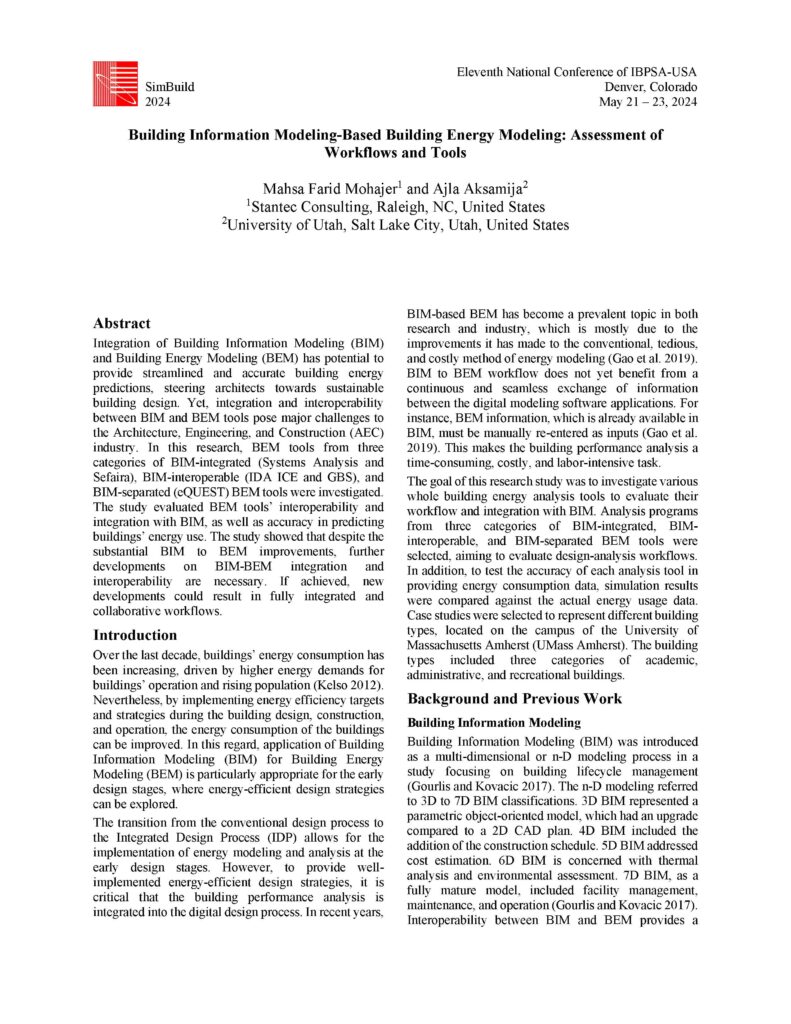
"Building Information Modeling-Based Building Energy Modeling: Assessment of Workflows and Tools" investigated interoperability between computational design and energy modeling tools. Integration of Building Information Modeling (BIM) and Building Energy Modeling (BEM) has potential to provide streamlined and accurate building energy predictions, steering architects towards sustainable building design. Yet, integration and interoperability between BIM and BEM tools pose major challenges to the Architecture, Engineering, and Construction (AEC) industry. In this research, BEM tools from three categories of BIM-integrated (Systems Analysis and Sefaira), BIM-interoperable (IDA ICE and GBS), and BIM-separated (eQUEST) BEM tools were investigated. The study evaluated BEM tools’ interoperability and integration with BIM, as well as accuracy in predicting buildings’ energy use. The study showed that despite the substantial BIM to BEM improvements, further developments on BIM-BEM integration and interoperability are necessary. If achieved, new developments could result in fully integrated and collaborative workflows.
Citation:
Farid Mohajer, M., and Aksamija, A., (2024). “Building Information Modeling (BIM) and Building Energy Modeling (BEM): Assessment of BIM to BEM Workflows and Energy Simulation Tools”, Proceedings of the International Building Performance Simulation Association (IBPSA) SimBuild 2024 Conference, Denver, CO, May 21-23, pp. 562-575.
